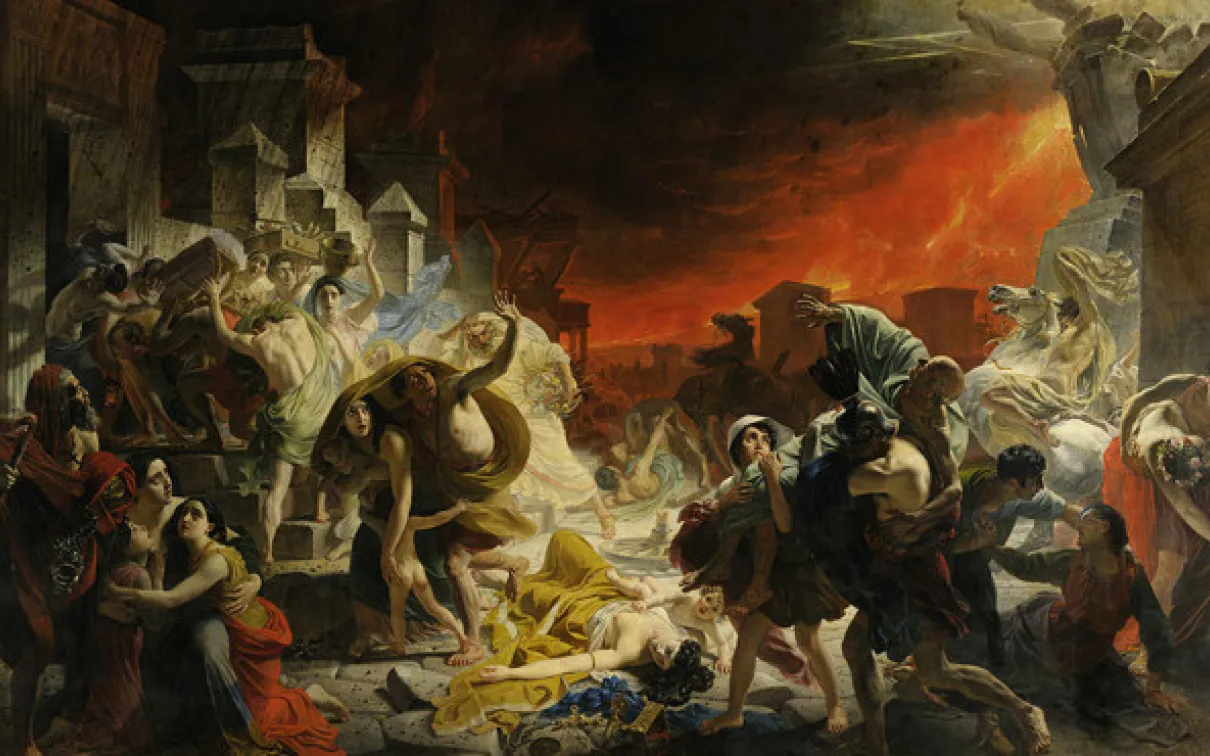Walking a half-Marathon as the Herculaneum soldier
Published
Categories
Author
Blog Post
Probably on October 24th in 79 AD a large group of people congregated on the beach at the seaside town of Herculaneum, in Italy. They were presumably trying to take ship to gain distance from Mount Vesuvius, which had been raining ash and rocks on the city, and the neighbouring town of Pompeii, all day. But suddenly, a massive cloud of red-hot ash swept down from the volcano directly towards Herculaneum. Studies of the skeletons on the beach show that they were mostly males, with women and children huddling in boathouses by the shore. One man in particular was a soldier. We know that because only soldiers could wear a military belt or weapons in public, and this man had both of very fine quality. The cloud, known as a pyroclastic surge, was of such heat that this man had the flesh boiled from his bones before he hit the beach sand, and his brain exploded from his skull. Every bone in his body was broken in the blast, as the breaks show signs of burning. Parts of his equipment were so burnt they were fused together, and are difficult to reconstruct.
On October 19th 2014 I will be walking in the Scotiabank Toronto Waterfront Half Marathon dressed as this man to raise money for the ROM.
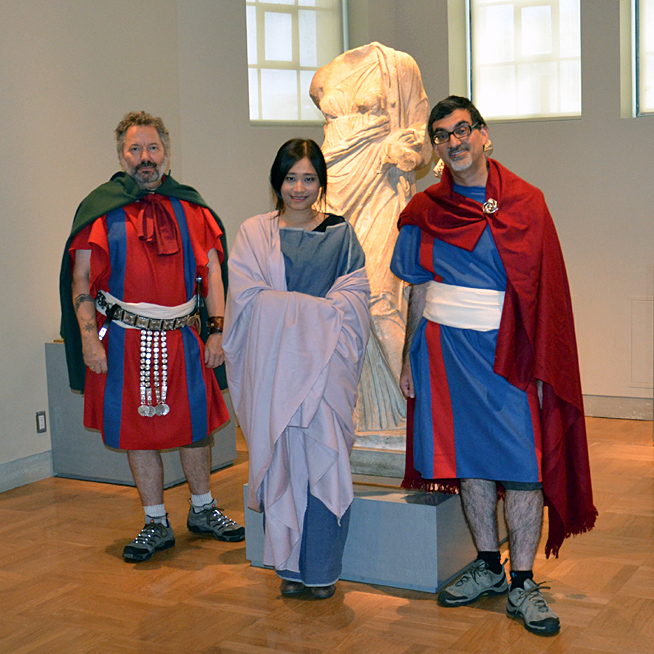
Team ROMan (l to r, Robert Mason, Jianfei He, Xerxes Mazda). One of the lines of evidence to say that the eruption was in October or November is that people were dressed for the season, so although no clothes were left on the Herculaneum soldier, I have a military tunic and braccae (trousers), with a military cloak or paenula. The highly decorated military belt with the "sporran" hanging in front, a copy of that worn by the Herculaneum soldier, would only be worn by soldiers, and would even be worn in peacetime just to let people know that this individual was not to be trifled with. Xerxes is dressed similarly, but is a civilan, while Jianfei is dressed in a chiton (dress) and palla (cloak). No, our shoes are not authentic reproductions of Roman footwear (see below) - photo by Kay Sunahara.
The reason I, and my team the ROMans, will be dressed as Romans is to prepare for some Roman public programming we have planned for next year, by which time I will have all the equipment of the Herculaneum soldier, including the sword, a correct dagger, coins, and also his carpentry tools. I will write more blogs about this man and his equipment nearer the date of the programming. All the money, that's 100%, that we raise will go to the ROM, but 25% of what we raise will go to a specific cause. Our 25% will go to having an item of gladiatorial armour fabricated, either a type of shoulder-guard known as a galerus, or a helmet, depending on how much sponsorship we get! We already have enough for a galerus, but to have a helmet made we will have to make $6,000.
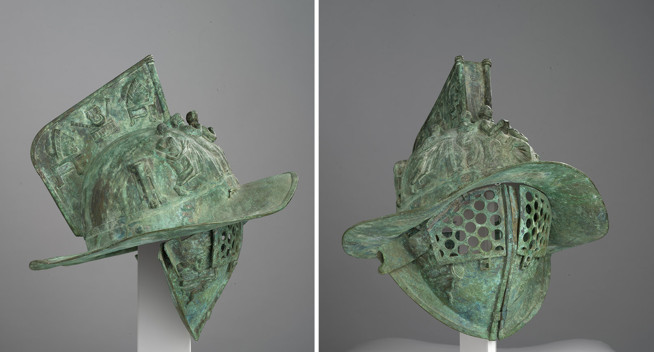
This helmet in the ROM collection (910.94.71) is actually a rather heavily made replica of a gladiator helmet from Pompeii. If Team ROMan raise enough money we will have a helmet like this made for visitors to try on during Roman programmng next year, and in the CIBC Discovery Centre. (ROM Photography)
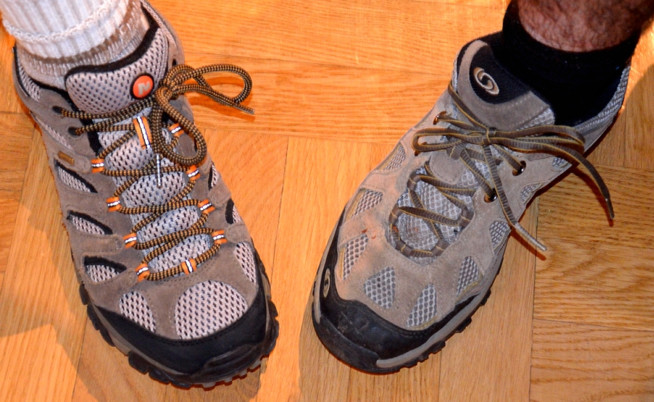
Although we will be wearing authentic Roman clothes, 13 miles is a bit far, so we will be wearing modern shoes - they do, however, look a lttle like Roman caligae! - photo by Kay Sunahara.
If you would like to sponsor us (all donatons are tax-deductible), the links are below:
Other Links:
Eruption of Mount Vesuvius in 79 AD
The Inconvenient Coin: Dating the Destruction of Pompeii and Herculaneum
Addendum:
We made it! We covered the 13 miles or 22 km in a lesiurely 3 hours 45 mins.
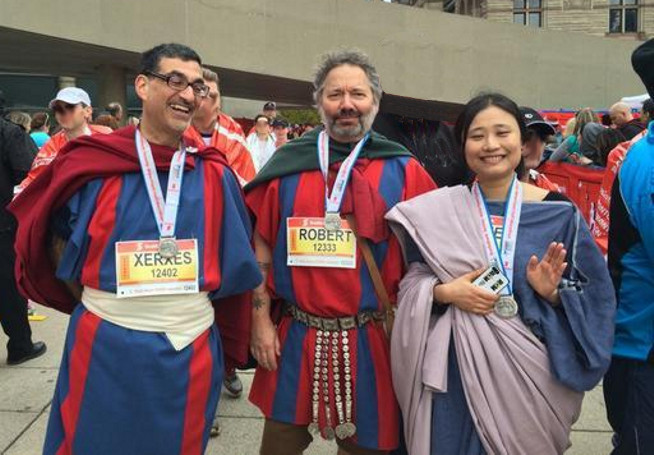
Team ROMan: making pain look stylish since 79 AD (photo by Janet Carding)

